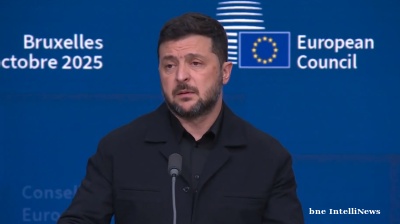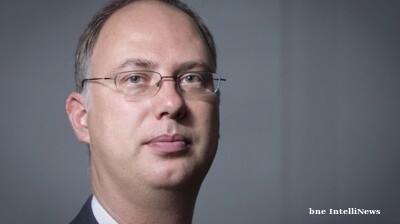The seasonally adjusted IHS Markit Russia Services Business Activity Index fell fractionally in December to 48.0
_0.png)
The seasonally adjusted IHS Markit Russia Services Business Activity Index fell fractionally in December to 48.0 from 48.2 in November, as Russia’s economic recovery from this year’s annus horribilis is still struggling to gather some momentum, Markit reported on December 31.
The services sector previously has been an engine of growth, fuelled partly by the explosion of online retail as Russia’s e-commerce booms. However, the lockdowns and return of stagnating real incomes, as well as both unemployment and inflation rises, have taken the wind out of the services sector, which has been one of the main victims of this year’s coronacrisis.
The services result comes two days after Markit released slightly better manufacturing PMI results. The headline seasonally adjusted IHS Markit Russia Manufacturing PMI for December was up at 49.7 in December from 46.3 in November.
Taken together, the IHS Markit Composite PMI Output Index improved slightly to 48.3 in December from 47.8 in November, but is still almost two points below the 50 no-change mark. In the upside-down world of 2020, manufacturing output has been doing better than services, which is a reflection of the underdeveloped nature of Russia’s economy, where manufacturing is still more important than services, the opposite of the more developed nations in Western Europe.
Outlook for 2021 remains uncertain
The prospects for 2021 are better, but much will depend on how the pandemic develops. On the one hand Russia was the first country in the world to start rolling out mass inoculations using the Sputnik V vaccine. The effort to produce enough vaccine to inoculate the entire 148mn strong population has been so big that industrial production got a boost in November, with the contraction posting a mild -2.6%, following the -5.5% contraction a month earlier, due to the ramp-up in the pharmaceutical sector.
With half a dozen vaccines being rolled out in the first quarter there is a chance for a snapback in 2021 as a year’s worth of pent-up demand is released.
On the other hand, the new more infectious variant of the coronavirus (COVID-19) means infection rates could continue to rise rapidly in the first half of 2021. Russia’s public health system was already close to breaking point in December, with 16 regions running at 90% of bed capacity or more.
The coronavirus situation in Russia is continuing to deteriorate, Deputy Prime Minister Tatiana Golikova told a meeting on December 30 of senior government officials and President Vladimir Putin. She admitted that the real number of infections in Russia was probably “three times higher” than the official numbers.
New data from the country's statistics agency, Rosstat, shows that during the first 11 months of 2020 there was an increase of more than 229,700 more deaths in Russia than during the same period in 2019. Golikova, who is in charge of the country's coronavirus response, said that "more than 81% of this increase in mortality over this period is due to COVID." That means 186,000 Russians died from coronavirus in these months, more than three times more than the previous official estimate of 55,000.
Service slowdown due to crisis
The latest services headline figure signalled a modest decline in business activity at Russian service providers in December. Anecdotal evidence suggested that the fall in output was due to subdued client demand and a further contraction in new sales, reports Markit.
“December PMI data signalled a further downturn in business activity across the Russian service sector. The pace of contraction remained only moderate, as the decline in new business eased,” Markit said in a press release. “At the same time, the rate of input price inflation was the second-fastest since March and marked overall. Despite weak client demand, firms partly passed on higher costs through the quickest rise in charges since April 2019. Meanwhile, output expectations improved to a four-month high amid hopes of an end to the pandemic.”
Service sector firms registered a third successive decrease in new business at the end of 2020, but the rate of decline softened to its slowest in the aforementioned sequence and was only moderate overall, according to Markit.
Similarly, the rate of contraction in new export sales eased from that seen in November. Foreign client demand remained notably weak, however, as new business from abroad fell at a pronounced pace.
Inflation has also spiked in the last quarter of 2020 and is expected to end the year at circa 4.8%, well over the Central Bank of Russia's (CBR) target rate of 4%.
“Russian service providers registered a substantial rise in cost burdens again during December. Although the rate of input price inflation softened from that seen in the previous survey period, it was still the second-fastest since March,” Markit reports. “The marked rise in cost burdens was often linked to supplier price hikes and unfavourable exchange rate movements.”
The ruble sharply devalued over the summer due to a combination of the oil price shock in March and growing geopolitical risk of new harsh sanctions from the new Joe Biden US administration, which is now feeding through to push up inflation.
At the same time, selling prices rose at an accelerated pace despite customer demand falling further. The solid increase was commonly attributed to the partial pass-through of greater costs to clients. Moreover, the pace of charge inflation was the quickest since April 2019, says Markit.
But the prospects of a vaccine-induced snapback in 2021 continue to buoy confidence in the service sector, and firms were more upbeat regarding the outlook for output over the coming 12 months in December.
“Optimism was buoyed by hopes of an end to the pandemic and the release of pent-up demand once restrictions are eased. The degree of sentiment strengthened and was the highest since August, but it was still below the long-run series average (since 2001),” Markit said.
But the bounce-back is still probably six months away, and in the meantime firms are still struggling to maintain profitability and continue to cut staff. Russian service sector firms reduced their workforce numbers at a solid rate at the end of 2020. The rate of job shedding in December quickened slightly from that seen in November.
Data

EU rare earth supply dominated by China and Russia - Eurostat
The European Union remains heavily dependent on China and Russia for rare earth imports, with nearly three-quarters of its supply sourced from the two countries in 2024, according to data published by Eurostat and reported by Statista.
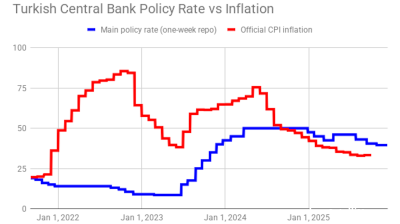
Turkey's central bank remains cautious, delivers 100bp rate cut
Decision comes on eve of next hearing in trial that could dislodge leadership of opposition CHP party.
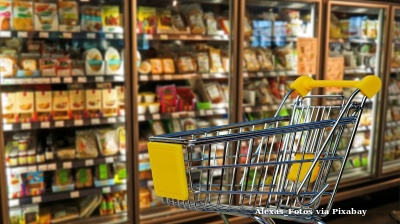
Polish retail sales return to solid growth in September
Polish retail sales grew 6.4% year on year in constant prices in September, picking up from a 3.1% y/y rise in August, the statistics office GUS said.
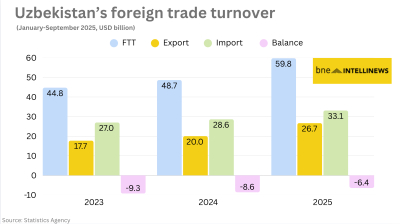
Uzbekistan’s nine-month foreign trade nears $60bn
Export growth of 33% and import expansion of 16% y/y produce $6.4bn deficit.

